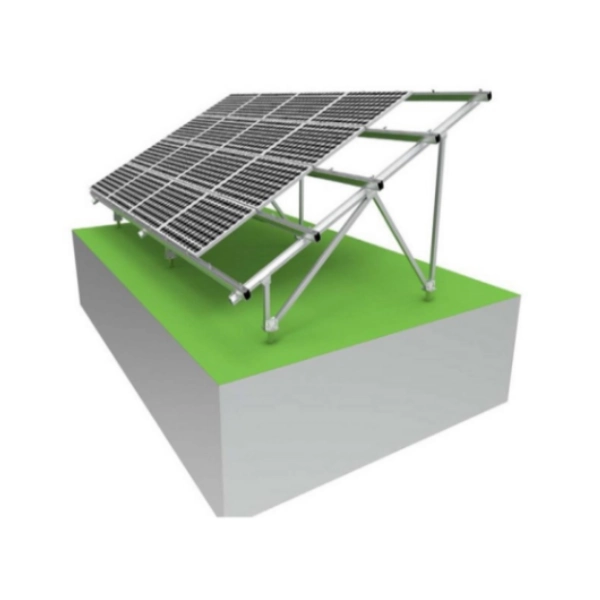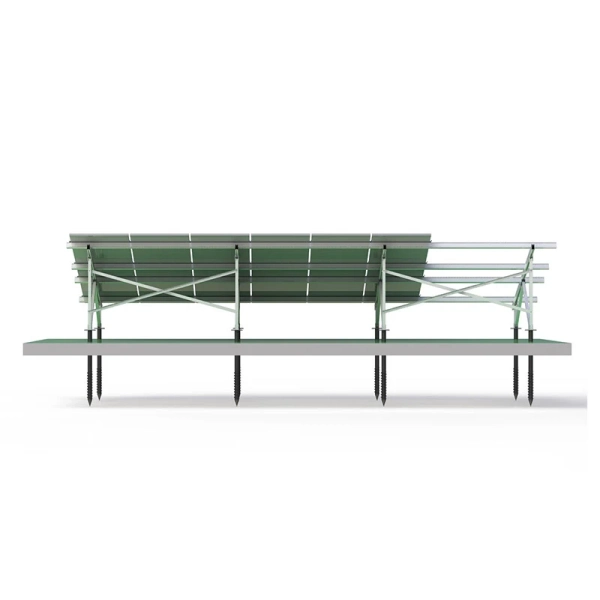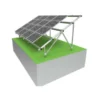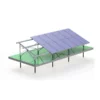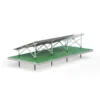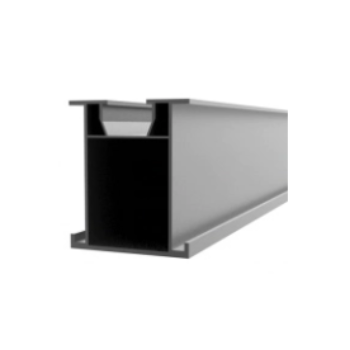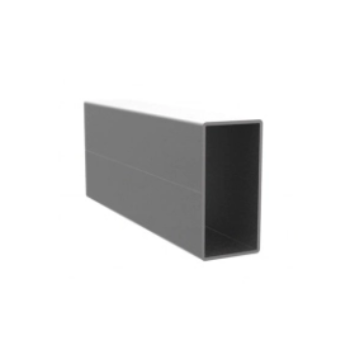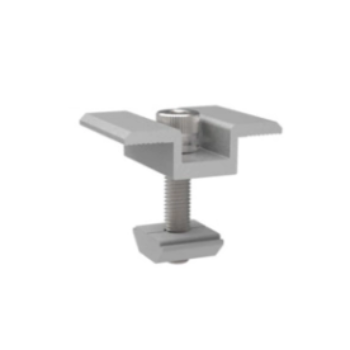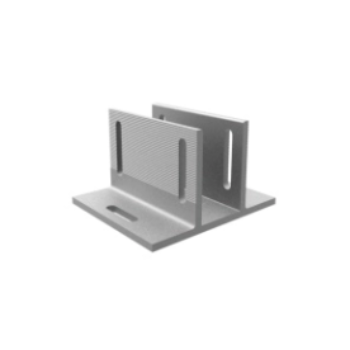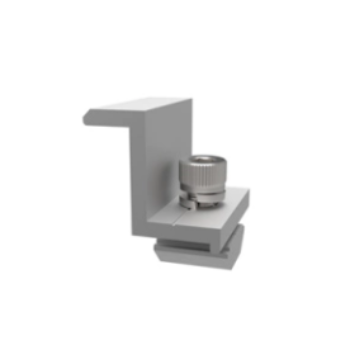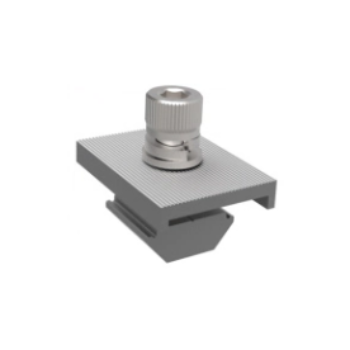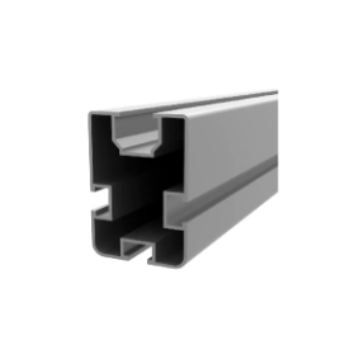W-type Solar Ground Mounting System Description
W type solar ground mounting system is a dual-pole support structure with diagonal bracing on a triangular base, giving it a “W” shape that improves the mounting system’s stability.
Coordination between the front and back poles lowers distortion and allows the system to endure higher wind forces and weight.
This sort of mounting mechanism is appropriate for PV systems installed on uneven terrain or in mountainous areas.
It is also suited for large-scale solar power facilities, which require stronger overall integrity and deformation resistance.
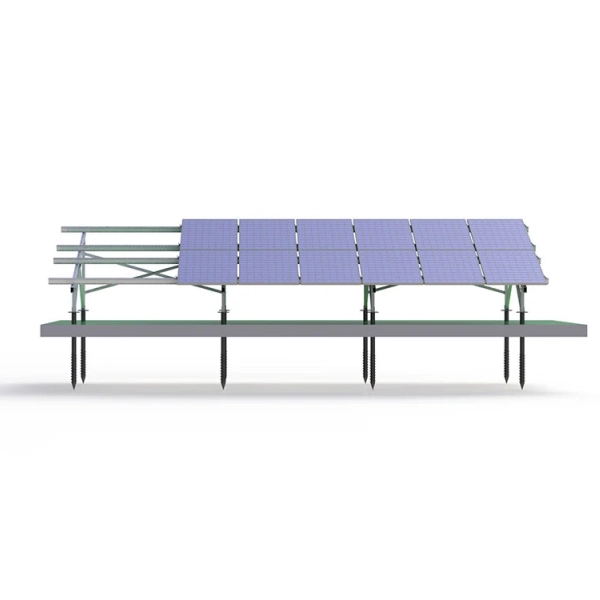
Features of the W type solar ground mounting system
Enhanced Stability
The system’s remarkable stability qualifies it for large-scale power plants, offering protection against potential damage during unforeseen disasters.
It is engineered to accommodate diverse terrains effectively, making it suitable for installation in mountainous or uneven areas.
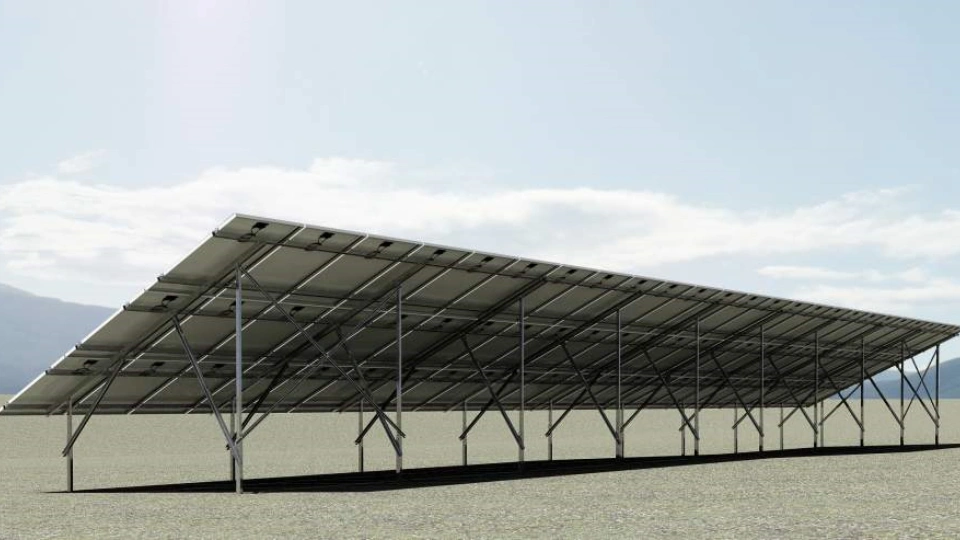
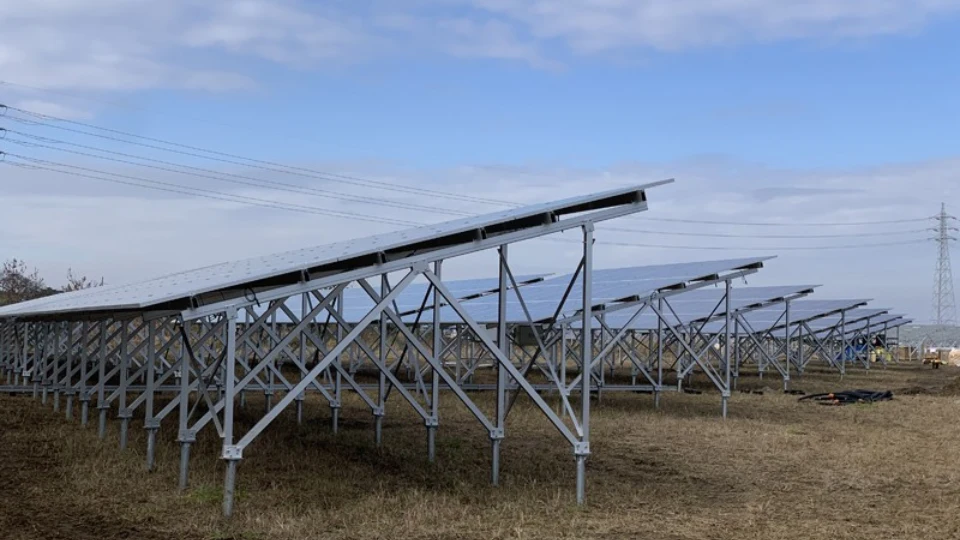
Superior Pre-assembly
The installation process is expedited, as no on-site drilling or cutting is required.
Excellent pre-assembly allows installation with just a locking adjustment.
Specification of W type solar ground mounting system
Installation Site | Roof or Ground |
Foundation | Concrete or Ground Screw Foundation |
Material | Aluminum 6005-T5 & Steel |
Color | Natural or Customized |
Anticorrosive | Anodized aluminum & stainless steel |
Tilt Angle | 0°~60° |
Wind Load | <60M/S |
Snow Load | <1.8KN/M2 |
Standards | AS/NZS 1170.2, JIS C 8955:2011 |
Warranty | 10 years warranty and 25 years service time |
Components
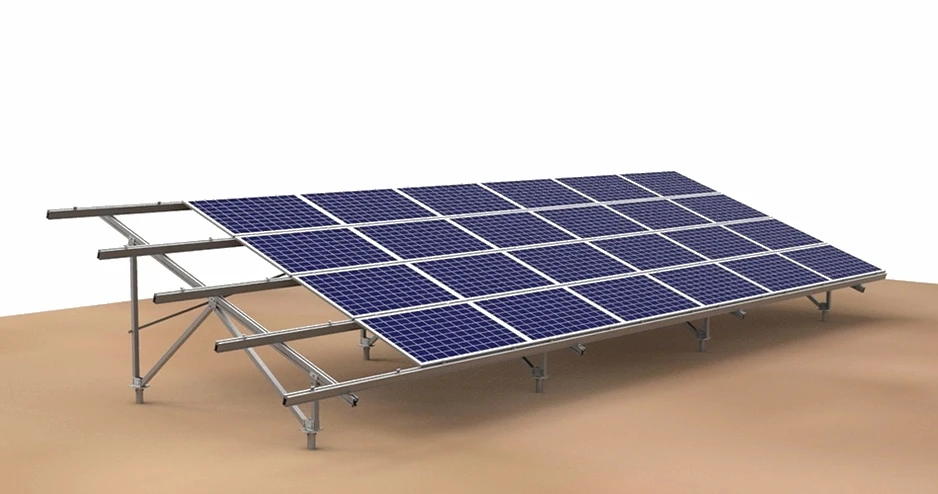
W type ground mounts FAQ
What are the advantages of the W-bracket compared to the triangular bracket?
Compared to triangular brackets, W-type brackets offer significant advantages.
The W-type brackets utilize more materials, ensuring higher overall system stability and better resilience against extreme weather conditions, making them highly suitable for large-scale projects.
What factors need to be considered for residential solar ground mounting?
Soil Type and Conditions
Before proceeding with ground solar installation, a comprehensive geological survey should be conducted to determine the soil type and conditions. Soil conditions encompass various variables that can impact the choice of installation structure and foundation.
Number of Panels
The number of solar panels required for the installation depends on the energy needs of the household. A proper assessment of energy consumption will help determine the size of the solar array and the supporting structure.
Installation Foundation
There are multiple types of installation foundations available for ground-mounted solar systems, each with varying costs, installation times, and complexities. The choice of foundation depends on the terrain and soil conditions.
Tilt Angle
The tilt angle of the solar panels plays a crucial role in optimizing energy production. The tilt angle should be carefully calculated based on the latitude of the installation site to maximize solar exposure throughout the year.
Shading and Obstructions
It is essential to identify potential shading sources like trees, buildings, or other obstructions that could obstruct sunlight from reaching the solar panels. Minimizing shading will increase the overall system's efficiency.
What are the common ground support materials?
Ground mounting brackets are essential components of solar panel systems, providing stability and support to the solar array. Various materials are used to manufacture ground mounting brackets, each with its own unique characteristics and suitability for different environments.
Aluminum Alloy Brackets
Lightweight and durable material
Often treated with anodization for improved corrosion resistance.
Suitable for residential rooftops, commercial buildings, and other installations where weight is a consideration.
Offers good resistance to weather and environmental conditions.
Steel Brackets
High-strength material, providing excellent structural stability.
Typically hot-dip galvanized to enhance corrosion resistance.
Suitable for installations in areas with strong winds or harsh weather conditions.
Requires regular anti-corrosion maintenance to prolong the lifespan.
Flexural Brackets
Made from a high-strength material such as steel.
Usually hot-dip galvanized for corrosion protection.
Designed for flexible installations on terrain like mountains, ponds, or forests.
Requires regular maintenance to prevent corrosion and ensure longevity.
What scenarios are suitable for solar ground mounting?
large open spaces
Ground solar installation is well-suited for large open spaces such as fields, empty lots, or open lands. These areas provide ample space for positioning solar arrays without any obstructions, optimizing sunlight exposure throughout the day.
Commercial and Industrial Facilities
Commercial and industrial facilities often have vast open spaces, making ground solar installation an ideal choice. Such as factories, schools, warehouses, and storage facilities.
The available space can accommodate a larger number of solar panels, leading to higher energy generation for the facility's energy needs.
Residential Ground Installations
For homeowners with sufficient space on their property, a ground solar installation can be a great option. It offers the advantage of not requiring any modifications to the roof structure and allows for easier maintenance and cleaning.
Solar Farms
Ground solar installation is the preferred method for solar farms, where large-scale solar arrays are installed to generate electricity for the grid. Solar farms typically require extensive open land, and ground installation allows for efficient panel arrangement and maintenance.
What are the types of ground-mounted solar systems
Ground-mount solar panel racking systems offer a wide range of options to choose from.
When it comes to ground-mount solar panel racking systems, they can be categorized based on their structural designs. Here are three common types:
Single-Pole Racking System
The single-post racking system, also known as the L-shaped support, is suitable for smaller solar power stations. It consists of a single vertical post that provides stability and support for the solar panels.
Double-Pole Racking System
The double-pole racking system, also referred to as the T-shaped support, is designed for larger solar power stations. It comprises two vertical posts connected by an angled support.
Frame-Based Racking System
The frame-based racking system is a versatile option that allows for flexibility in designing solar panel arrays of various scales.
It consists of multiple support poles and cross beams, forming a framework that can be customized to accommodate different system sizes and layouts.
This type of racking system offers adaptability and can be tailored to meet specific project requirements.
Read more: https://alvsolar.com/ground-mount-solar-racking-solution/
What are the two main types of ground-mounted solar installations?
Standard Ground Mount Solar
Standard ground-mounted solar refers to a system where solar panels are installed on a structure directly mounted on the ground.
The specific installation method for standard ground-mounted solar depends on the ground conditions.
The most common fixed methods include pile-driven, concrete block ballast, precast foundations, and ground anchor systems.
Some standard ground-mounted systems can be manually adjusted a few times per year to accommodate seasonal changes in the sun’s position.
Pole-Mounted Solar
Pole-mounted solar systems are elevated installations where solar panels are mounted on metal poles.
Multiple solar panels are supported on a single pole, raising them off the ground higher than standard ground-mounted installations.
Pole-mounted solar systems are typically equipped with tracking systems that automatically tilt the solar panels to capture the optimal amount of sunlight.
Read more: https://alvsolar.com/solar-panel-ground-mounting-system/
What are the structural differences between ground-mounted and rooftop solar systems?
Mounting Structure
Ground Solar Mounting System: Ground systems use freestanding structures, such as ground-mounted frames or pole mounts, to support the solar panels. These structures are anchored to the ground using foundations like concrete footings or ground screws.
Rooftop Solar System
Rooftop systems use different mounting methods, such as roof mounts or ballasted systems. Roof mounts are attached directly to the roof surface by using roof hooks, while ballasted systems use weights to secure the panels without penetrating the roof.
Overall, a rooftop solar installation structure will be cleaner and more cost-effective, while a ground-mounted solar structure will involve more parts as well as ground conditions.





